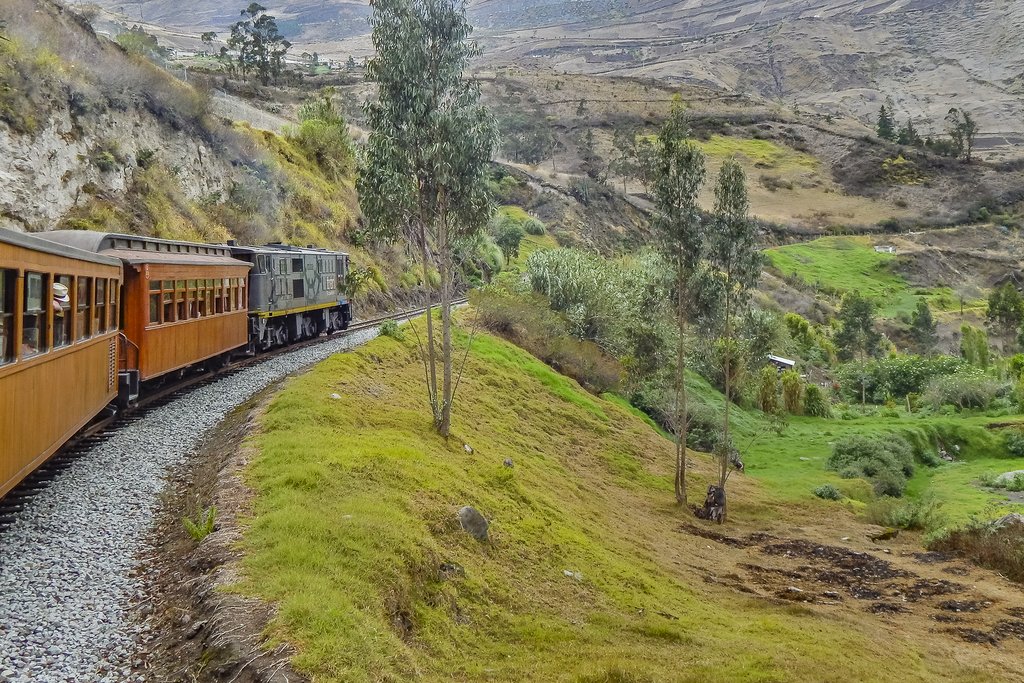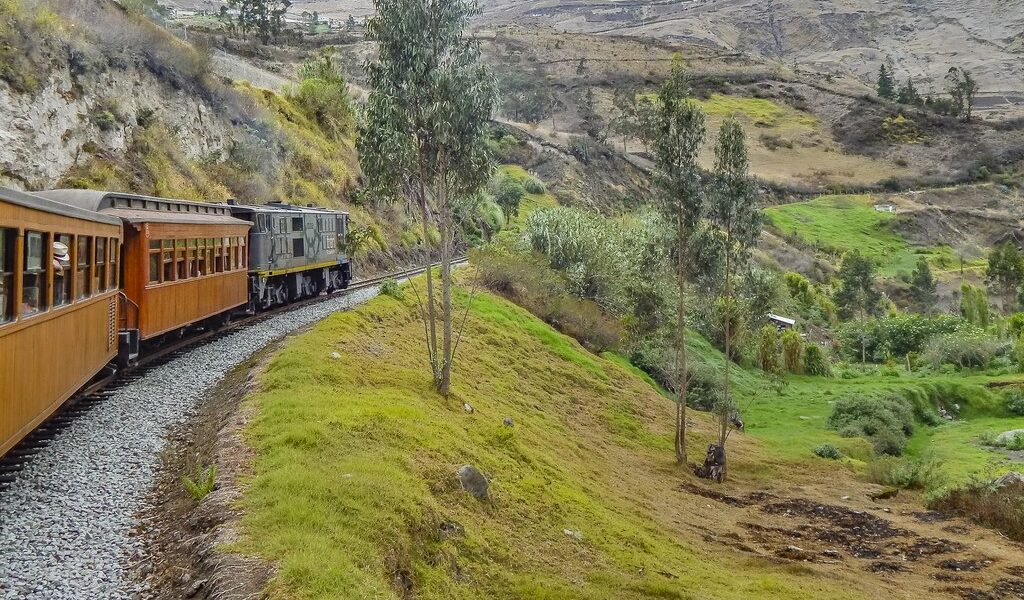
By South American standards, Ecuador is a fairly small country. Most major destinations — with the exception of the Galápagos Islands — are within a day’s drive of each other. Follow these suggestions for how to structure your visit and make the most of your time in this geographically diverse nation.
## Exploring Ecuador: A Guide to Touring Options
How much time do you have to dedicate to your Ecuadorian adventure? And perhaps even more importantly, what are the specific places you dream of visiting within this incredibly diverse country? The answers to these fundamental questions will largely determine the nature of your journey through Ecuador. The possibilities are vast and varied, promising an unforgettable experience tailored to your individual preferences and constraints.
If your time is limited, or if you simply prefer a more structured approach, guided tours can be an excellent choice. They offer a streamlined way to experience some of the most spectacular scenery Ecuador has to offer, all while ensuring efficient hotel and airport transfers. This allows you to maximize your time and minimize logistical concerns, letting you fully immerse yourself in the beauty and culture surrounding you. However, it’s crucial to remember that opting for a guided tour doesn’t automatically confine you to a large, impersonal group. Many tour operators offer the option of hiring a private guide, allowing for a more personalized and intimate experience, tailored to your specific interests and pace.
On the other hand, if you have more time at your disposal, the prospect of independent travel through Ecuador can be incredibly rewarding. While it presents more of a challenge in terms of planning and logistics, it also offers a greater sense of freedom and the opportunity for spontaneous discovery. You can set your own itinerary, linger longer in places that capture your interest, and truly immerse yourself in the local culture at your own rhythm.
However, your desired destination also plays a significant role in determining how you can best navigate Ecuador. Not all of Ecuador’s natural wonders are easily accessible or safely explored solo. In the expansive and biodiverse **Amazon Basin** (locally known as the **Oriente** in Ecuador), where the rainforest teems with life and the indigenous cultures remain strong, guided tours are often the only practical and responsible option. Similarly, in the remote and often challenging mountain country of Ecuador’s tradition-steeped highlands, a knowledgeable guide can be invaluable for navigating the terrain and understanding the local customs. Moreover, certain locations within the captivating **Galápagos Islands** archipelago mandate guided tours to protect the delicate ecosystem and ensure a responsible and informed visitor experience.
## The Allure of Guided Tours
Guided tours offer distinct advantages, particularly for travelers who are ambitious about seeing as much as possible within a limited timeframe. They are, in some cases, not merely recommended, but absolutely essential for reaching certain adventurous and remote destinations. But beyond logistical necessity, guided tours provide an additional layer of richness to your travel experience. The specialized knowledge and insights of a skilled guide can significantly enhance your understanding and appreciation of the environment and culture around you.
Guides often possess unparalleled knowledge of the intricate network of hiking trails in a particular region, allowing you to explore hidden gems and challenging routes with confidence and safety. They can also provide specialized information about the incredible diversity of flora and fauna, helping you identify unique species and understand the ecological significance of the landscape. Furthermore, guides often have established relationships with local communities, facilitating meaningful interactions between travelers and native peoples, enriching your understanding of their traditions and way of life.
Beyond the wealth of information and local expertise, guided tours offer practical benefits that contribute to a more relaxed and enjoyable travel experience. They provide peace of mind and ease of communication, especially in regions where language barriers can be significant. In many areas of Ecuador, Spanish or Quechua may be the primary languages spoken by locals, making it difficult to navigate and interact without the assistance of a translator or guide.
Consider the allure of witnessing some of the astounding 600-odd species of birds that have been recorded in the lush cloud forests surrounding **Mindo**. To truly appreciate this avian paradise, a knowledgeable guide is essential to help you spot and identify species that you would likely never see on your own. Or perhaps you are drawn to explore the incredible southern coastal national park of **Parque Nacional Machalilla**, where a trip out to the wildlife-replete **Isla de la Plata**, often called the “Poor Man’s Galapagos,” or the challenging 12-mile cloud forest hike to **San Sebastián**, are only feasible with the expertise and logistical support of a guide. And for those seeking to discover the less-traveled trails of the volcano-dotted **Parque Nacional Cotopaxi**, a professional guide’s insider knowledge is often the key to unlocking hidden scenic vistas and ensuring a safe and rewarding experience.
Typically, guided tours are best arranged in the towns and cities that serve as convenient bases for exploring the surrounding natural wonders. For those embarking on the much-traveled **Quilotoa Loop**, renowned for its stunning volcanic crater lake and opportunities to experience traditional highland life in indigenous villages, skilled guides can be readily hired in **Latacunga**. For exploring the national parks and enchanting cloud forests of the **Northern Highlands**, there are numerous options for finding qualified guides in **Quito**, as well as in the charming towns of **Otavalo** and **Mindo**.
## The Social Dynamic of Group Travel
Embarking on group travel within Ecuador offers a variety of advantages that can significantly enhance your overall experience. One of the most compelling benefits is that certain services or excursions may simply not be available for solo travelers or very small groups. In many cases, tour operators and transportation providers require a minimum number of participants to make a trip viable. Joining a group ensures that you have access to these opportunities that would otherwise be unavailable.
Beyond the practical advantages, group travel provides a unique opportunity to connect with other like-minded adventurers. Sharing experiences, overcoming challenges, and celebrating successes together can forge strong bonds and lead to lasting friendships that extend far beyond the duration of your trip. It’s remarkable how much camaraderie can develop while sharing a rustic lodge in the heart of the jungle, or enduring a multi-day trek through the rugged highlands.
Group travel arrangements can often be made spontaneously. Many hotels that offer organized trips will assess which of their guests are interested in participating, often arranging excursions on a day-to-day basis. Discounts for larger groups are often available on unique and adventurous train rides, such as the **Tren Crucero**, Ecuador’s stunning cross-country rail journey that traverses diverse landscapes from **Quito** to **Guayaquil**, offering a memorable glimpse into the country’s rich history and natural beauty.
Even when traveling with a group, it’s still possible to have authentic and enriching cultural experiences. Seeking out local markets, engaging in conversations with residents, and participating in traditional activities can provide valuable insights into the Ecuadorian way of life.
Ecuador offers a multitude of destinations that are particularly well-suited for organizing group travel. **Quito**, the vibrant capital city, is surrounded by a wealth of attractions, ranging from towering volcanoes to lush cloud forests, making it an ideal starting point for group adventures. **Baños**, nestled between the cloud forest and the Amazon jungle, is strategically located for planning excursions into both of these distinct ecosystems. And **Cuenca**, a charming colonial city in the highlands, boasts scintillating nearby attractions, from fascinating Inca ruins to picturesque villages renowned for their traditional handicrafts.
For certain types of group travel, such as expeditions down the **Río Napo** into the remote and biodiverse **Parque Nacional Yasuní**, joining a pre-arranged group is often the only viable option. This ensures coordinated transportation, secure lodging, and the guidance of experienced local experts for the duration of your jungle explorations.
## The Freedom of Self-Guided Tours
In Ecuador, the level of protection afforded to certain regions – particularly within the country’s eleven national parks and various reserves – can impact the feasibility of self-guided travel. Undertaking challenging endeavors like climbing 16,000-foot volcanoes, such as **Volcán Cotopaxi**, or venturing deep into the dense rainforest of **Parque Nacional Yasuní** should not be undertaken lightly, and certainly not attempted solo. In some other national parks, such as **Parque Nacional El Cajas** near Cuenca, the independent traveler might consider exploring alone, but hiking without accredited guides is usually restricted due to safety concerns and park regulations.
However, self-guided trips are perfectly suitable for visiting the majority of Ecuador’s cities and towns. The public transportation system is generally decent, especially in the more populated areas, allowing you to travel between destinations with relative ease. Opting for independent travel also grants you a level of flexibility that is simply not possible with pre-arranged guided tours, giving you the freedom to adapt your itinerary to your own interests and whims.
It’s worth noting that self-guided tours can be seamlessly combined with guided tours in destinations that are more complex or challenging to visit independently. For example, you could travel independently to **Coca**, a bustling oil town on the edge of the Amazon rainforest, and then organize a guided tour down the Río Napo to Parque Nacional Yasuní. Similarly, you could explore Cuenca and its surroundings independently, then enlist the services of a knowledgeable guide for visiting Parque Nacional El Cajas. If you’re traveling along Ecuador’s stunning coastline, you can explore the charming towns and villages independently, then hire a qualified guide for water sports activities, such as surfing, diving, or whale watching.
While commonly perceived as an experience that must be orchestrated through a tour operator, the enchanting **Galápagos islands** can, in fact, be explored independently by many travelers. Although for certain activities and excursions within the archipelago, joining a tour group may be required to comply with park regulations or access specific sites, the option of visiting the Galápagos independently offers a different layer to the overall experience.
B-702

